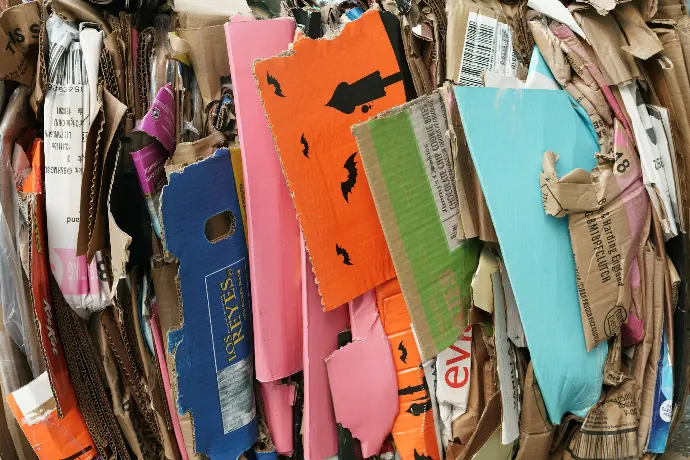The green revolution has taken the world by storm, with a growing emphasis on sustainability and environmental friendliness. Within this movement, the terms 'biodegradable', 'compostable' and 'biobased' play a major role, also when it comes to production and imports from Asia. These terms, while often used interchangeably, have unique meanings and environmental implications. Their correct understanding is important for companies that strive to minimize their environmental impact while contributing to the circular economy.
In this blog:
- Read what 'biodegradable', 'compostable', and 'biobased' really mean.
- Not everything happens equally: The place and the process make the difference.
- Compostable is good, with one caveat: It's all about proper processing.
- Biobased: It is more than just the origin of the material.
- Sustainable importing from Asia: Opportunities and pitfalls on the road to green.
What does biodegradable mean?
Biodegradable materials break down into elements such as water, CO2, and biomass through natural processes such as bacteria and fungi. However, the time this process takes varies considerably; some items, such as food scraps, decompose within weeks or months, while materials such as wood or certain types of plastics take years or even decades to break down. This emphasizes the importance of carefully choosing materials for specific purposes to minimise environmental impact. However, 'biodegradable' is not always synonymous with environmentally friendly. In natural habitats, such as oceans or forests, the conditions for effective degradation - such as the right mix of microorganisms, humidity, and temperature - may be lacking, making these materials just as problematic as conventional plastics without access to industrial composting facilities.
Biodegradable plastic: These are plastics that can be broken down through natural processes. An example is PLA (polylactide), a plastic made from corn starch. Although PLA is theoretically biodegradable, it requires industrial composting facilities to break down effectively, meaning it should not simply be left in nature.
Read also:

The world of recycling: Which materials are recyclable?
This blog provides an overview of different types of recyclable materials, their recycling processes, and the impact recycling has on our planet. This gives us insight into how we can contribute more effectively to a more sustainable world.
What does compostable mean?
Compostable materials are specifically designed to decompose quickly and safely, but only under the right conditions, such as those found in industrial composting facilities. According to certain standards, for example EN 13432, they must degrade at least 90% within 90 days. This process depends on the right balance of temperature, moisture, and microorganisms. Without this specific treatment, compostable products are not necessarily better than traditional materials because they will not break down properly. The success of this requires good cooperation: from correct collection by consumers to correct processing by waste management systems. This highlights the importance of both education about and access to composting facilities to fully realize the benefits of compostable materials.
Compostable packaging: This includes items such as compostable bags that are specifically designed to break down within a certain time in industrial composting facilities. An example is packaging with the OK Compost label, which indicates that it complies with the European standard EN 13432 for compostability in industrial installations.
What does biobased mean?
Biobased materials are made from natural sources such as plants and are known for their green image because they offer an alternative to traditional fossil materials. Yet it is good to take a critical look at their sustainability. Not all biobased products break down easily in the environment, and some even require a lot of water and land during production. This means that their total impact on the Earth can sometimes be surprisingly high. Therefore, it is important to not only appreciate that a product is biobased, but also consider how it is made and processed throughout its life cycle. This gives us a more complete picture of what is truly sustainable.
Biobased cleaning products: These are made from renewable vegetable oils and other natural ingredients instead of petroleum derivatives. Biobased products do not necessarily have to be biodegradable or compostable, but their production is often less harmful to the environment.
Specific challenges and opportunities when importing from Asia
When importing sustainable products from Asia, companies face specific challenges. Asian markets, including China, Vietnam, and India, are rich in resources for biobased materials and are leading the way in the production of biodegradable and compostable goods. However, the real challenge lies in ensuring the sustainability and environmental footprint of these imported goods. Quality control, verification of eco-friendly claims, certifications and standards require in-depth understanding and close cooperation with local producers. At the same time, importing from Asia offers unique opportunities to be at the forefront of the green revolution by making innovative, sustainable products accessible to the global market.
The balance between quality and environmental impact
One of the biggest challenges when importing sustainable products from Asia is finding the right balance between product quality and environmental impact. Products such as compostable packaging and biodegradable toilet paper must not only meet strict environmental requirements but also the quality expectations of consumers. This requires continuous innovation and technological advancements, as well as a strong commitment to sustainable practices throughout the supply chain.
Read also:

What is circularity? The key to a sustainable future.
Circularity is an answer to the traditional, linear economic model of 'take, make, use and throw away', offering a more sustainable and responsible way of living and doing business.
The role of circular economy and recycling
In the transition to a circular economy, importing biodegradable, compostable and biobased products from Asia plays a major role. However, the success of these efforts depends heavily on local and international recycling infrastructure and policies. To contribute effectively to the circular economy, imported products must be designed for end-of-life, meaning they must be able to be efficiently recycled or composted. This requires a collective effort to change both production and consumption patterns.
Conclusion
Choosing the right materials, with an understanding of how long they take to break down, plays a big role in reducing the impact of products on the environment. Options that are biodegradable and compostable point the way to less waste, but the varying breakdown times require a thoughtful approach and use. Biobased materials bring a new layer of sustainability to product development by emphasizing their origin from renewable sources. However, it is important to be aware of their full life cycle and how they are ultimately broken down. Through a deeper knowledge and application of these important concepts, both companies and consumers can take a step towards a greener future.
Do you want to improve the quality of your textile imports and comply with EU standards?
To learn more about using care labels correctly and ensuring consumer satisfaction, contact us today!









